Die klein sinkhuisie
Brixton
Johannesburg
Hoek van Wimbledon Road en Fulham Road (143l)
Hierdie pragtig behoue ou huisie van sink en hout herinner aan vervloë dae se delwershuisies en die soeke na rykdom en fortuin tydens die delwerstyd.
Hierdie huisie is die enigste hout en sinkgeboutjie in Brixton wat behoue gebly het en is deel van Johannesburg se argitektoniese geskiedenis.
Hierdie sinkhuisie is gebou in 1904 as ń hoekwinkeltjie vir J. Feinstein.(Joseph ?). Hierdie areas het ń groot Joodse gemeenskap gehuisves en die Joodse Negosiewinkel was kenmerkend hier. Feinstein’s Corner Shop.
Die sinkhuisie is in 1986 verklaar as ń Nasionale Gedenkwaardigheid en geklassifiseer as ń A Gebou wat beteken dit mag nie gesloop of verander word nie.
Huidig word dit as ń woonhuis gebruik en lyk maar verwaarloos. Inligting oor hierdie huisie is maar skraps en inwoners beskryf dit as die oudste huis in Johannesburg.
Brixton is een van die voorstede van Johannesburg wat ontstaan het op die plaas Braamfontein. Brixton is vernoem na Brixton, ń voorstad van London en baie straatname is ook geneem vanaf London en distrikte in en om London. Hierdie voorstad is ryk aan geskiedenis (1922 mynwerkersopstand, ABO, Braamfontein se dinamietontploffing oa ) en was en is nog altyd ń smeltkroes van tale en kulture.
Fotos: Gysbertus Johannes Ströh. 2019
Bron: Internet
Johannesburg Heritage Foundation.
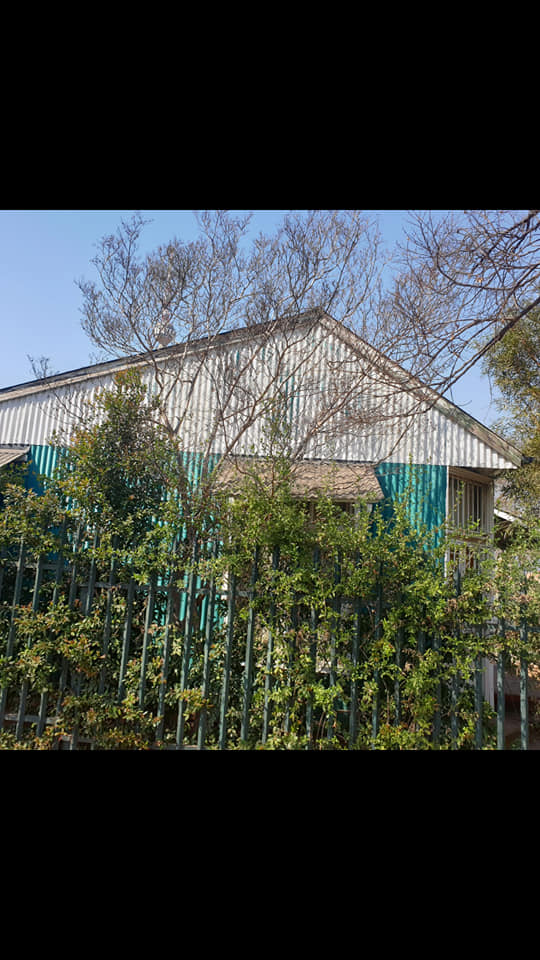

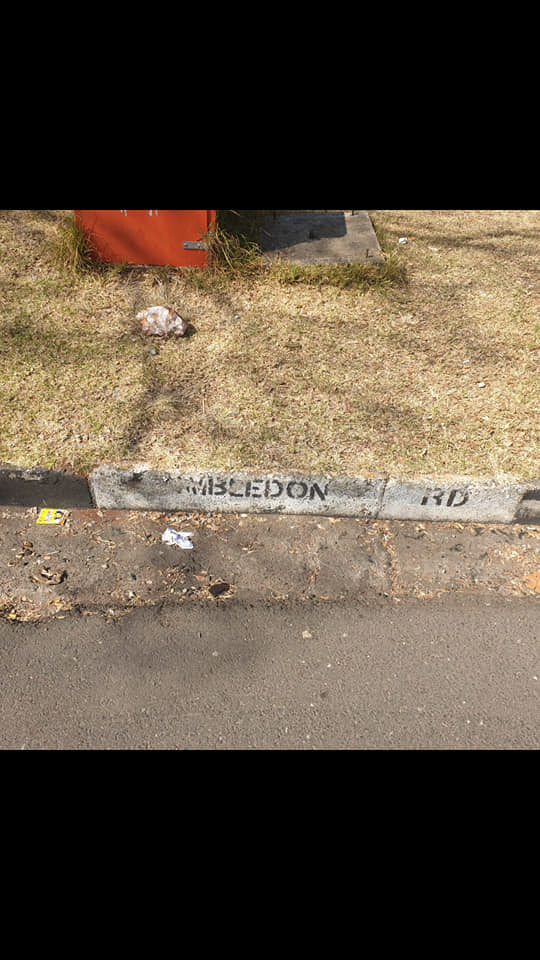
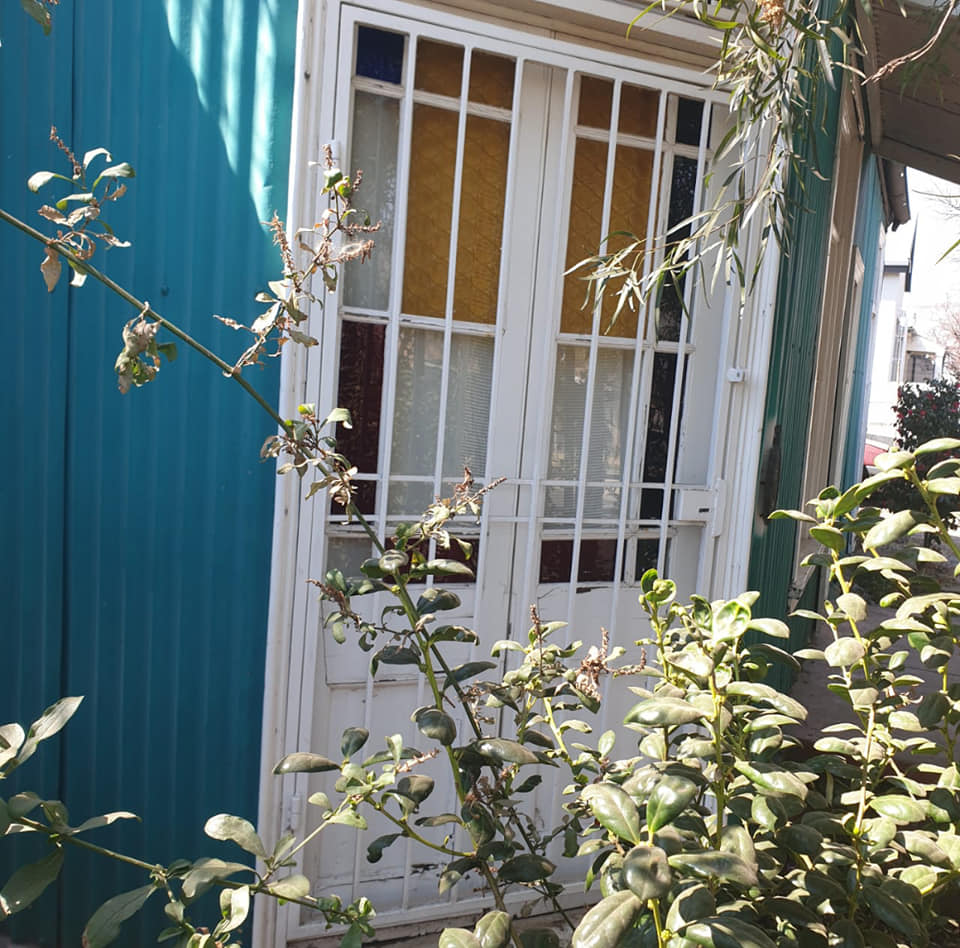
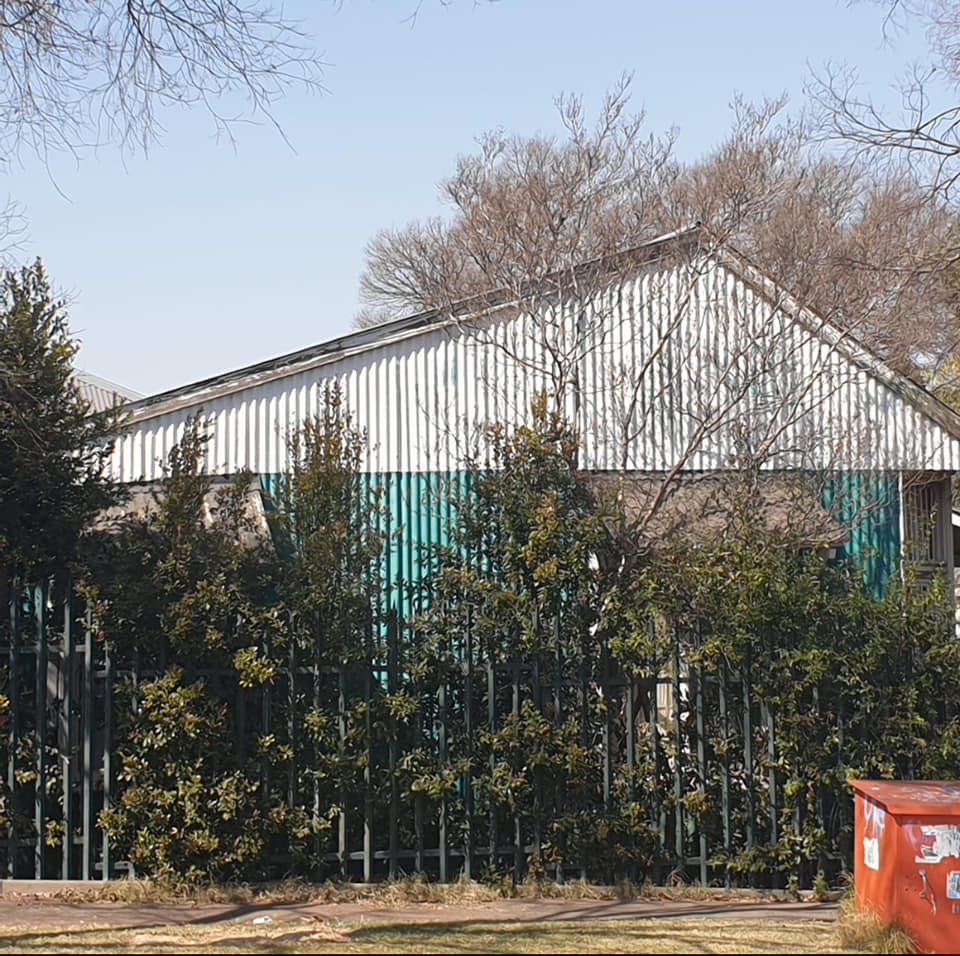
Sink en Houthuisie ontvang Blou Plaat 2024
The Hertitage Portal May 2024
The City of Johannesburg and Johannesburg Heritage Foundation honoured Brixton with a blue plaque in April 2024 for one of the earliest wood and iron buildings. This is the first of a series of blue plaques for this popular community-minded suburb revealing a growing awareness that many sites and places are worthy of heritage recognition
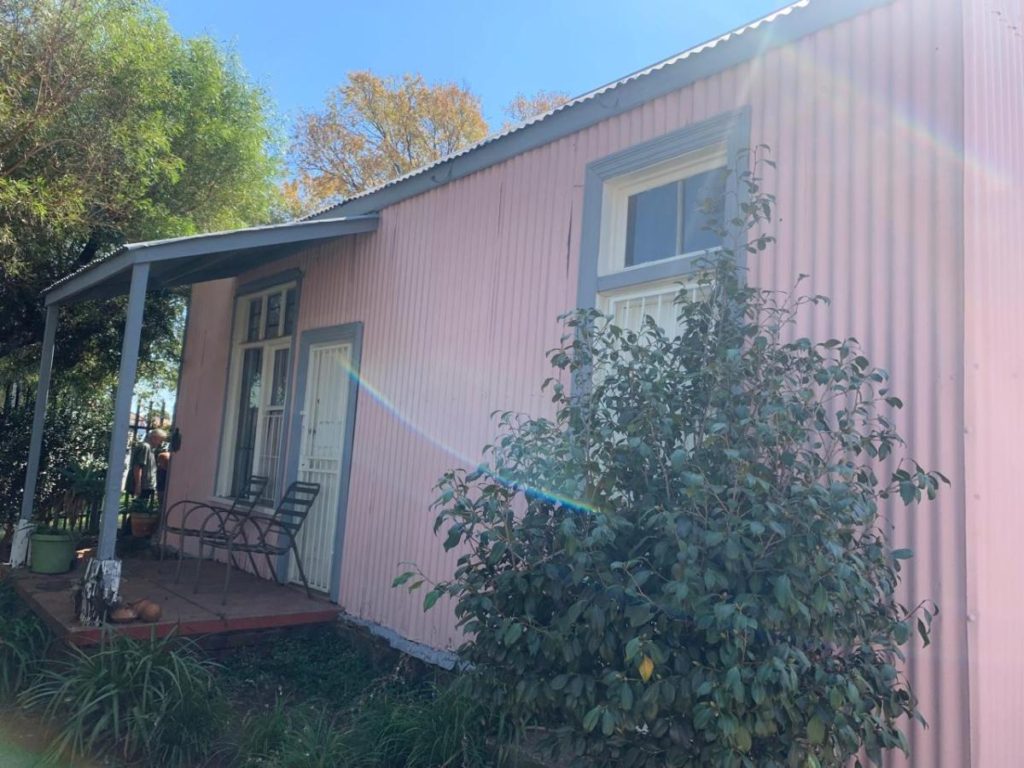
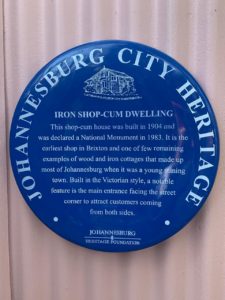
Remarkably this shop-cum dwelling had already been declared a National Monument in 1983, by the old National Monuments Council. After 1994, the Council was dissolved in favour of a new provincial system but the old NMC badge has been preserved.
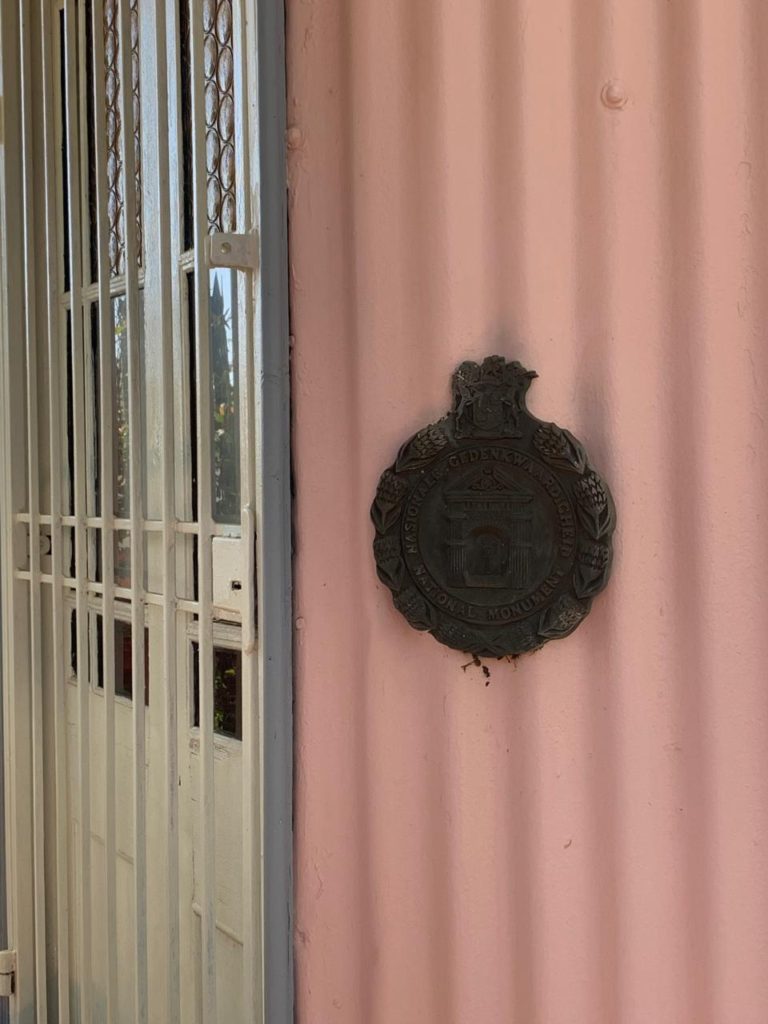
The objective of a Johannesburg blue plaque is to encourage an appreciation of local heritage properties. A blue plaque is a symbol of civil society recognition.
Brixton was surveyed in 1902 for the Auckland Park Real Estate Company on land that had been part of the Braamfontein farm. It was named for its counterpart, the suburb of Brixton in London. Using street names such as Fulham, The Serpentine, Whitehall, Chiswick, Isleworth, Surbiton, Kew, Uxbridge, Threadneedle, Putney and Hampton was a marketing ploy by the property company to make the new suburb attractive to English immigrants. The London names offered a familiar echo of possible past lives. Here was a small slice of the heart of Empire set down in a colonial mining town, caught up in speculative fever. The Transvaal was now a British colony and the “uitlanders” were in command. This suburb aimed to a attract a solid artisan class aspiring to home ownership.
The suburb was named Brixton by Horatio Collins (and there is also a Collins Street) who was the secretary of the property company. 500 stands went on sale in 1903, each one 50 x 100 feet, and sold on auction on liberal terms on a 99-year lease basis. Loans were available for those wanting to build their own homes, cottages, villas, or other residences, at 7 per cent per annum interest and covering 50% of the cost of building. But the suburb would not have been built over in the first round of the sale of stands; houses were erected through the later decades of settlement and construction.
The suburb of Brixton is situated on one of the ridges of the Witwatersrand and Brixton residents are proud of the fact that they live on the continental divide. It is a convenient suburb located close to the city centre and bounded by Rossmore, Auckland Park and Cottesloe to the North, Hurst Hill to the West, Vrededorp to the East and Mayfair to the South. It extends over 56 hectares, but this does not include the Brixton cemetery which lies to the east of the suburb of Brixton.
The original modest houses on the small stands were typical of the early decades of the 20th century, clustered together with street views from stoeps, hip roofs, square shape, using local building material. The selling point for Brixton was that ‘building operations should be comparatively cheap and easy’, because the Johannesburg brick factories were nearby in Brickfields; with sand and stone being obtained from the real estate company.
This early wood and iron structure on the corner of Wimbledon and Fulham roads is a remnant of this period. It was built in 1904 and combined the function of a home and a corner shop, hence is one of the earliest shops in Brixton. A shop of this type would have served passing customers with perhaps, breads, eggs, milk, a quarter pound of cheese or a block of margarine or butter. The hours of opening would have been irregular and long, early morning and late evenings. It reminds people what Brixton was like when it was first settled by a white artisan class. It is one of the few remaining examples of wood and iron construction that belongs to the first decades of the dusty young mining town. That type of partially prefabricated house was common in the downtown streets clustering around the old Market Square. As the town expanded, such structures were also erected in nearby emerging suburbs. The corrugated iron was imported and was transported form the ports by rail or ox wagon.
It was built in Victorian style, with a hip roof and sash windows. Interior ceilings would have been prefabricated as pressed steel panels. A notable feature is the front door entrance, set at an angle facing the street corner. It was meant to invite and attract the passing traffic approaching from both streets. In the early days, corner stands commanded a premium price because it was an obvious location for a local business.
Wood and Iron House Brixton – Drawing by Eric Brindeau.png
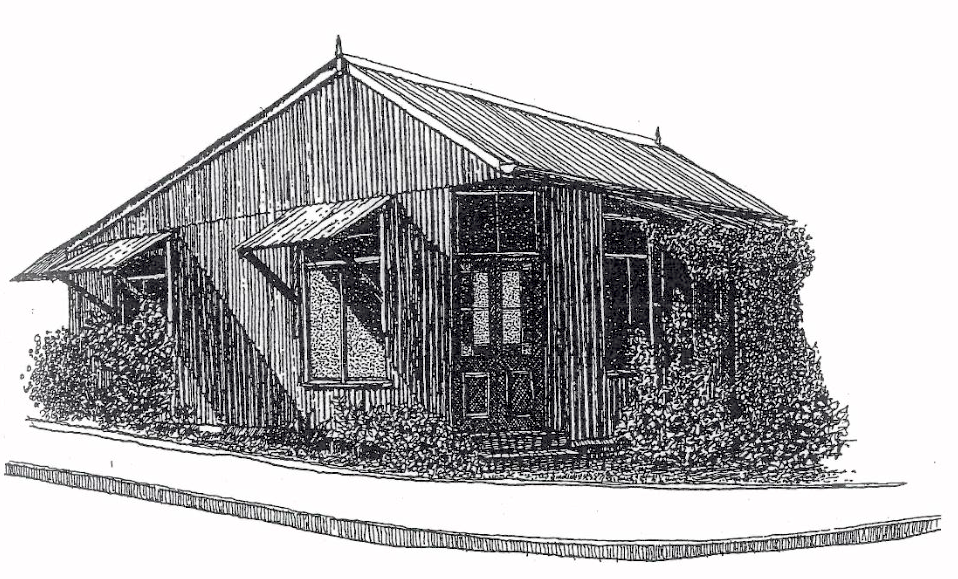
Eric Brindeau’s 1991 study ‘An Architectural Guide to Brixton through the Ages’ (University of Port Elizabeth) discussed the hierarchy of space in the interior arrangement of this building. The shop and its storeroom constituted the front rooms and were larger than the back bedroom, dining room and kitchen. There was no interior Water Closet (toilet) or bathroom. Ablution facilities would have been outside the house. The floors were layered with timber decking (often Oregon pine) and the ceilings fashioned from prefabricated pressed steel. The outside walls may have been painted white and the roof a dark red. Alternative colours would have depended on what was cheaper or readily available at the time.
Today the yard has been fenced off and the main access is through a side gate on Fulham Road. There is a stoep with a bench placed against the front window and the yard has become a parking spot for a car. Nevertheless, it is a good spot for a sundowner, watching the passing pedestrians on the street. The community has supplied a cheerful pink paint, albeit out of context as it was not an option in 1904.
Wood and iron building Brixton stoep – Kathy Munro – 2024.jpeg
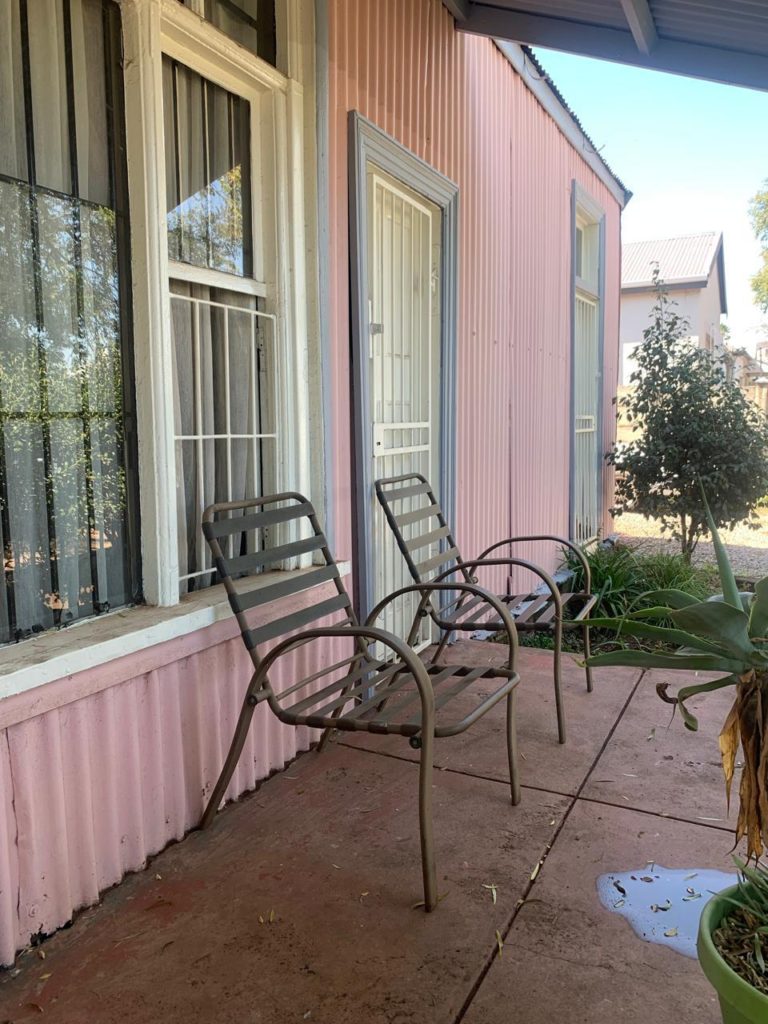
Social and business practice and the role for the shop on the corner has come full circle. Today many of Johannesburg’s poorer suburbs also have informal shops – pass through Yeoville and explore Mayfair and you will spot the spaza shops, open at late hours for the purchase of beers, cigarettes, washing powder or bread. All those forgotten simple household necessities. Structurally such little shops could be an add on or a converted garage or back room. It seems that Johannesburgers old or new, have always used the urban space imaginatively!
The High Street of Brixton was planned along British town planning concepts of the time. It is still is the main business street of the suburb. The name signals a high street in a London village or English town, but here it is more of a motley street of small businesses, shops and houses. There are used car lots, hardware shops, furniture stores, supermarkets, grocery stores, and corner cafes. There is also a municipal swimming pool.
One shop not on the High Street but with an important history to tell was the Chinese shop, at the corner of Caroline and Chiswick. It closed in 2018 and for a while was an art gallery but has fallen into disrepair. A 2018 exhibition celebrated the Chinese family, the Hongs, and their culture. They ran the shop for over half a century. It was a cross between a convenience store and a general dealer. Times have changed and the shop awaits a new opportunity.




